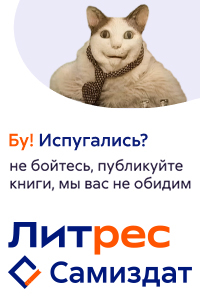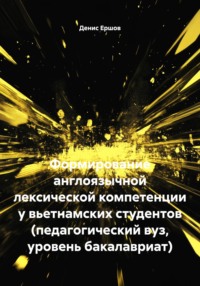
Полная версия
Английский язык. Полный курс
Exercise 9. Answer the questions.
– 1. Что такое семантическое поле? 2. Как соотносятся синтагматический и парадигматический уровень в рамках семантического поля? -3. Можно ли семантическое поле быть построено с учётом данных когнитивной лингвистике? -4. Как когнитивная лингвистика влияет на восприятие семантического поля? 5. Приведите примеры обычных семантических полей и полей, построенных в рамках категорий когнитивной лингвистики. Чем они отличаются?
(Урок №3/Lesson 3)
Charles: Let’s discuss consonant sounds in English. Sounds of speech that are produced when the air flow in the mouth is obstructed or redirected in some way, and which produce noise as a result of this obstruction, are known as consonants. Vowels, on the other hand, are sounds that are produced without any obstruction of the air flow. The classification of consonants in English is based on several different criteria. These include the way in which the vocal cords work, the active organs involved in speech production and the location of the obstruction, the way noise is generated and what type of barrier is used, whether there is more noise or musical tone in the sound, and how many points of focus are involved in producing noise. Taking into account the activity of the vocal cords, consonants can be classified as voiced or unvoiced. Voiced consonants involve vibration of the vocal cords while unvoiced consonants do not.
The strength of the air flow when we exhale and the level of muscle tension when we pronounce certain sounds, such as the letters in «deaf» and «lenis», determine how strong or soft these sounds are. When we pronounce voiced consonants, the sound is softer and weaker. Some consonants in the English language have a contrast in their sound based on whether they are voiced or unvoiced. For example, the letter «d» is voiced, while the letter «t» is unvoiced. Other consonants like «m», «n», «l», «w», «r», «j», and «h» do not have a paired counterpart. According to the position of our tongue and lips when we make a sound, all consonants can be classified into three main groups: labial, lingual, and pharyngeal. Labial sounds are made with the lips, like «p», «b», «m», and «w». Lingual sounds involve the front part of the tongue, like «t», «d», «n», and «l». Pharyngeal sounds are produced at the back of the throat, like the «h» sound.; Middle-language (mediolingual): [j]. Back-lingual: [k], [g], [ŋ]. In the formation of anterior lingual consonants, an obstruction is created by the front or tip of the tongue, which may touch various parts of the hard palate. Depending on the position of the front of the tongue, we have: a) Apical consonants (from the Latin apex – «top»). When pronounced, the front of the tongue is raised and active: [t], [d], [n], [l], [s], [z], [θ], [ð]. b) Kakuminal consonants (from Latin cacumen – «hollow»). When pronounced, the front of the tongue is pushed back and down, and the center of the tongue is not used: [r]. c) Dorsal consonants (from Latin dorsum – «back»).
When pronounced, the front of the tongue is lowered towards the teeth and the back of it is raised towards the hard palate: the Russian consonants [t] and [n]. The medial lingual consonant [j] is produced by bringing the center of the back part of the tongue towards the hard palate. Posterior lingual and velar consonants are produced by bringing the back of the tongue towards the soft palate. Pharyngeal sounds include the sound «h», which is produced in the pharynx. Depending on the location of the point of articulation, we have: interdental sounds, such as «θ» and «ð»; alveolar sounds, like «t», «d», «n», «l», «s», and «z»; postalveolar sounds, including «r»; and palato-alveolar sounds like «ʃ», «ʒ», «ʧ», and «ʤ». Consonants can be classified according to how they produce noise and the type of obstruction they create. There are bowed, noisy, explosive (occlusive or stop) consonants like «t» and «d», as well as nasal consonants or sonants like «m» and «n». When producing nasal sounds, a complete obstruction is created. There are also slotted (constrictive) sounds, which are further divided into noisy (fricative) sounds like «f», «v», «θ», and sonant sounds like «r», «j», «w», and «l». These sounds are produced with an incomplete obstruction.; Occlusive-constrictive consonants or affricates ([ʧ], [ʤ]) are created when a gap is formed after a full closure. If noise predominates in the process of consonant formation, noisy consonants result. If there is a predominance of musical tone, sonant consonants are formed. Slit and bow-slit consonants can have one or two constrictions, depending on whether they are single-focus ([s], [z]) or two-focus ([f], [v], [θ], [ð], [r], [j], [ʧ], [ʤ], [ʃ], [w]).
Exercise 10. Read the following words in transcription, paying attention to the articulation of these sounds. Write a transcription of those words where it is missing.
1. ∫ – wi∫, session, fini∫, discussion, ∫i: ld, ∫ip, oppression, ∫o:t, wo∫, pə΄tri∫ən, commission
2. n – [name, kind, now, blind, name, mind, no, note,, find, coin, sun, fond, nose]
3. p, t – [pit, speak, pit, spell, pet, pen, pop, debt, pup, doubt, pair, talk, hit, test, pick, top, tell, text]
4. k – [keep, cake, success, coat, according, make, occupy, take, occur, like, accent, book, look, took, spoke, accept, accident]
5. θ – [thin [θin], this, theme [θi: m] тема, thought, month [mΛnθ] месяц,
through, faith, myth, tenth [tenθ] десятый, death, thick [θik]],
6. ð – [they [ðei] они, then, this [ðis] это, those [ðouz] те, you’d, them [ðem] им, их, be, lead, these [ði: z] эти, said, that [ðæt] тот]
7.w – [week, watch, weight, win, wasp, weigh, when, we, way, what, wound, who, week, wind, will, work, which, won, window, wake].
Jasper: Мы используем простое настоящее время для описания привычных или повторяющихся действий. С помощью этого времени мы можем говорить о вещах в целом, а не только о том, что происходит в данный момент. Мы применяем его, чтобы подчеркнуть, что какое-то событие происходит постоянно, регулярно или многократно повторяется, или чтобы выразить общую истину. При этом не важно, происходит ли действие непосредственно в момент речи или нет.
●Dennis, do you usually eat fish with eggs? – Денис, ты обычно ешь рыбу с яйцами?
●The students attend lectures every day.– Студенты посещают лекции каждый день.
● I often go fishing in the mornings.– Я часто хожу на рыбалку по утрам.
●The moon orbits around the Earth.– Луна вращается вокруг Земли.
How is the Present Simple formed? It’s easy! Just take a verb and remove the «to» particle from the infinitive. Then, place the verb after the subject. That’s the basic rule for forming the Present Simple. For example: – I go to work every day – She brings me coffee every morning – They usually play tennis every weekend – It snows in winter Note: In the third person (he/she/it), the verb usually ends with «s» or «es». For example: – She rides – He dreams – She teaches – It wishes If the verb ends with -s, -sh, -ch, -x or -o, add «es» to the end. For example: – She wishes – He teaches. If the verb ends with «y» and is preceded by a consonant, the «y» is changed to «i» and -es is added. For example, «try» becomes «tries».
If the verb ends with a vowel before the «y», the -es is also added without any changes. For instance, «play» becomes «plays». To make a negative sentence, an auxiliary verb is used with the subject. For example: «I do not go to school every day» or «She does not like the weather in London». Negative pronouns and adverbs can also be used, such as «Nobody speaks Vietnamese» or «I don’t do anything».. Question: When asking questions, the auxiliary verb is usually placed before the main verb. For example, «Do you like pizza?» or «Does she study English?» Sometimes, question words such as «where» or «why» are used to ask more specific questions. For example, «Where does he live?» or «Why do you drink green tea?»? When an auxiliary verb is used in a sentence in the present simple tense, the -s ending on the main verb disappears. This is because the auxiliary verb acts as a «magnet» and «pulls» the -s to itself. This rule applies to both negative and interrogative sentences in the present tense. It’s important to note that the auxiliary verbs «do» or «does» can also be used in affirmative statements to add emphasis or emphasis to the sentence. For example, «I do want to try that» or «Sveta does know how to cook».
Present Simple
Exercise 11. Put the verbs in correct form.
– Nina (to wear) a blouse and a skirt.
– Sergey (to drink) tea in the mornings.
– They (to play) tennis (often).
– Alfred (to go) to work every day.
– My aunt (to get up, to wash, to brush one’sr teeth) at 6 o’clock.
– We (to clear the table) home at 7.15 every morning.
– My father (not to be) busy on Sunday.
– You (to leave) home late.
– The pupils usually (to do) homework.
– We (to read) the magazines every evening.
– He (to teach) English at a school.
– The sun usually (to shine) all day in summer.
– The earth (to move, to go) round the sun.
Exercise 12. Convert the affirmative sentences from exercise 11 into negative sentences and explain how you would do it.
Sample: Nina doesn’t wear a blouse or skirt because she usually wears a dress or jeans.
Exercise 13. Convert the affirmative and negative sentences from exercises 11 and 12 into interrogative forms and explain how you did it.
Sample: Does Nina wear a skirt and a blouse? —
Why doesn’t Nina wear a skirt and a blouse?
Fluffy: Let’s continue our conversation about alligators, and, for the sake of discussion, let’s analyze another passage from «The Alligator», written by Shelly Katz:
Part one
Chapter 1
It was a primeval night, dark and calm. (Это была первобытная ночь, тёмная и спокойная). Except for the occasional call of a limpkin (За исключением случайного оклика хромого арамы, или пастушкового журавля) and the low croak of a frog (незначительного кваканья лягушки), the swamp was still (на болоте было тихо). Darkness hung like a thick veil (Темнота нависла плотной вуалью). There were no glistening (сверкающих, блестящих, сияющих, искрящихся, мерцающих) lights from nearby towns (огней из близлежащих городов), not even the vague flicker of candlelight from a cabin to illuminate the blackness (ни даже смутного мерцания свечей в хижине, которое могло бы осветить темноту). Only the pale new moon cast any light (Только бледная молодая луна отбрасывала какой-то свет). Данный отрывок пронизан атмосферой первобытности и уединения, и автор использует ряд стилистических приемов и выразительных средств для создания мощной визуальной и эмоциональной картины.
Эпитеты: Слова «первобытная ночь», «темная и спокойная», «бледная молодая луна» находят отклик в воображении читателя, передавая атмосферу старины и что-то первобытное, исходящее от самой природы. Эпитеты формируют образ не просто темной ночи, а ночи с особым, даже мистическим значением.
Сравнения и метафоры: Фраза «темнота нависла плотной вуалью» использует метафору, чтобы создать представление о том, сколько мрак окутывает пространство. Вуаль подразумевает что-то легкое и тонкое, что, однако, плотно охватывает, создавая чувство удушья или скрытия.
Перечисление: «сверкающих огней из близлежащих городов» и «смуглого мерцания свечей» создают контраст между темной природой и человеческими огнями, подчеркивая уединение и отсутствие цивилизации. Это также обращает внимание на небольшое количество источников света в этой очень темной обстановке.
Сенсорная детализация: Описание звуков («оклик хромого арамы» и «кваканья лягушки») придает окружающему миру ощущение жизни, несмотря на отсутствие активности и света. Это создает глубину восприятия природы как живого, дышащего пространства.
Игра на контрасте: Отсутствие искусственного света («ни даже смутного мерцания свечей») контрастирует с присутствием «бледной молодой луны», что подчеркивает тишину и одиночество этого места. Луна, хотя и является источником света, представляет собой что-то слабое и эфемерное в сравнении с глубиной ночи.
Конец ознакомительного фрагмента.
Текст предоставлен ООО «Литрес».
Прочитайте эту книгу целиком, купив полную легальную версию на Литрес.
Безопасно оплатить книгу можно банковской картой Visa, MasterCard, Maestro, со счета мобильного телефона, с платежного терминала, в салоне МТС или Связной, через PayPal, WebMoney, Яндекс.Деньги, QIWI Кошелек, бонусными картами или другим удобным Вам способом.











